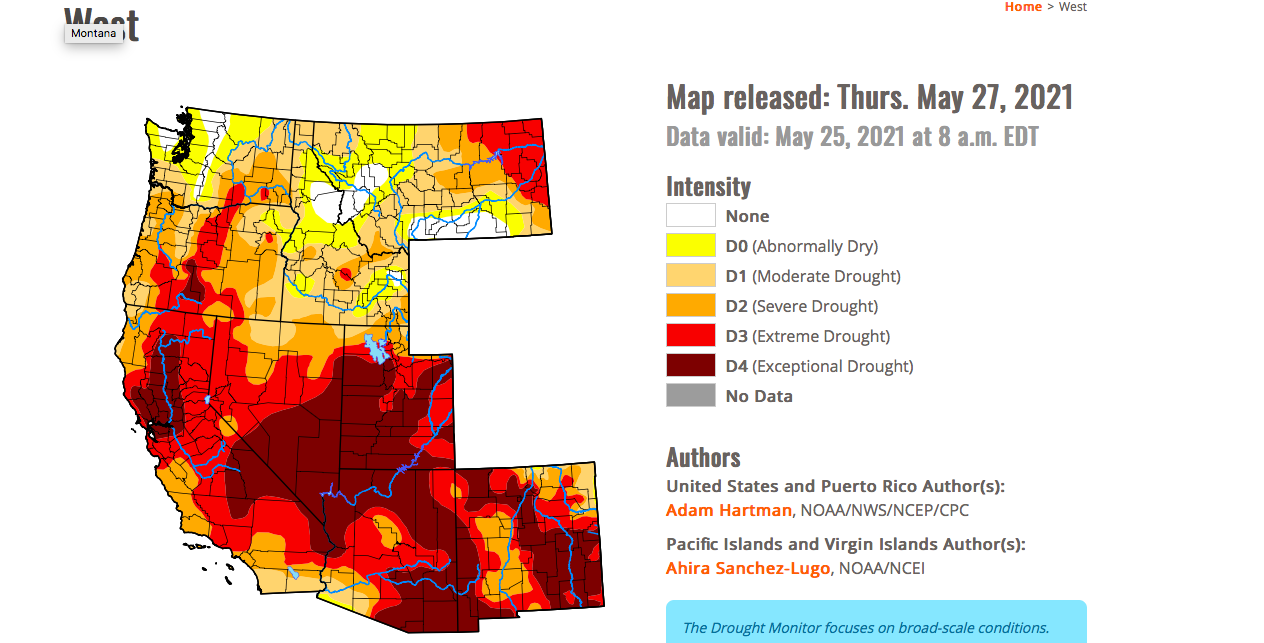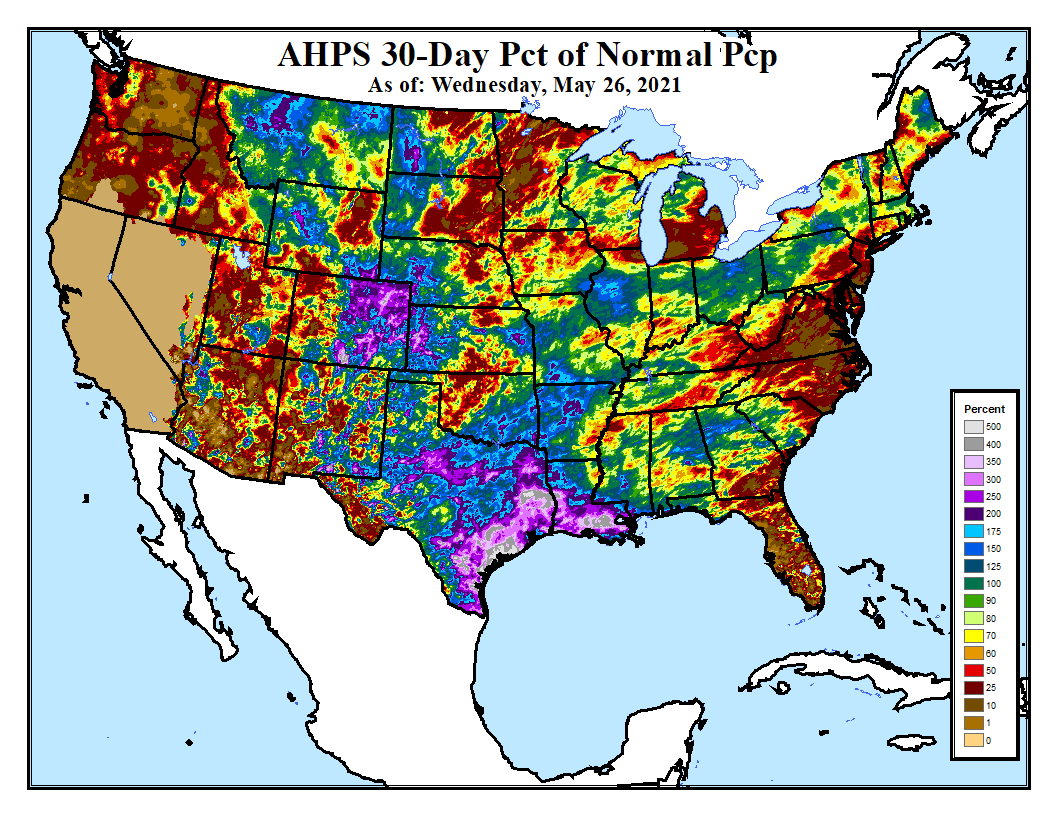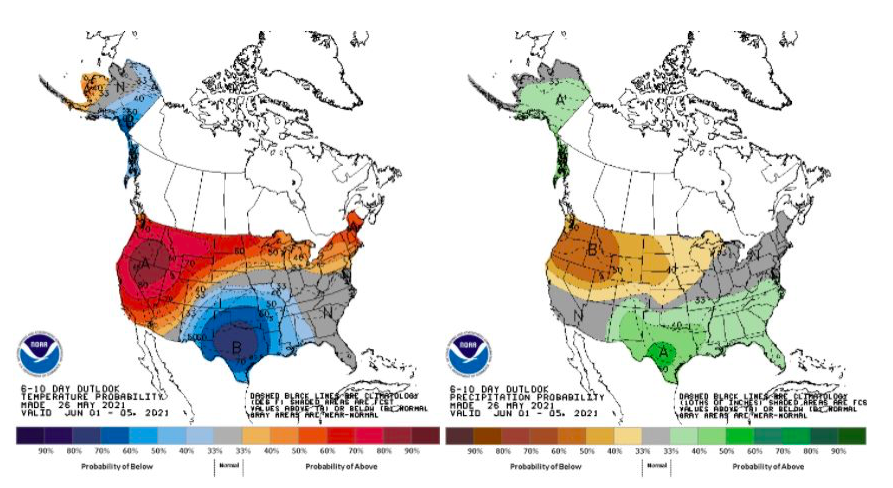Recent Rains Won't Be Enough to Rid Plains, Southwest of Drought
U.S. Farm Report 05/29/21 - Farm Journal Report
As the 2021 planting season enters its final phase, a growing drought may be just getting started.
“I think we're in the fourth driest year in record,” says Tyler Ribeiro, a dairy farmer in Tulare, California. “We're also seeing our second year of drought.”
Ribeiro says without snowpack this winter, some farmers are facing a year with no surface water for irrigation, and with the escalating cost farmers will have to pay for groundwater, fallowed acres are becoming more common.
“People are not farming. That's the concern,” he says. “We have people pulling out hundreds of acres of farmland just so they have enough water to grow what they can, not what they need, but what they can. That's the concern.”

A dire situation, and as a dairy farmer, Ribeiro says the issue is two-fold.
“There are land areas out here that are going to get one-acre foot of water from the ground, and that's what they're allocated,” he says. “Good luck growing cactus on one-acre foot. You're not going to be able to feed with that. You can't grow trees out there. And we align with a lot of these tree guys in a sense of we feed their byproduct. I need those almond hulls; I need those orange peels. I need a lot of those things. That's how we stay efficient.”
The California farmer says he’s learned to get creative, but the full impact of this year is still unknown.
“How bad this drought is and how hard it's going to affect us, it's going to affect this in more ways than I think people even understand right now,” adds Ribeiro.

The dire drought situation in the West is one USDA meteorologist Brad Rippey thinks could last through at least the remainder of 2021.
“For the far West, there's really no opportunity for relief until we get into the tail end of 2021,” says Rippey. “We have to get through the summer, and the fall on what we've got in the reservoirs and in the soil moisture. And it's a bad situation.”

As California and the West waiting on rain, moisture started moving into portions of the Plains this week.
Producers in North Dakota, expected to plant some 7 million acres of soybeans, are dealing with subsoil moisture levels at 81% short to very short, a situation all too familiar for North Dakota farmer Joe Ericson.
“It's dry,” he says. “We thought going in it was because we had little to no snow fall, snow cover this year. But we were wet going into last year and we were 60 percent prevent plant. So we had some subsoil moisture. But that's starting to disappear, too, now.”
Little Relief in North Dakota
While portions of North Dakota welcomed rain the past week, the moisture hasn’t fallen everywhere in the state.

“We're out of moisture in the ground, we're on a hay and no grass,” says Larry Schnell, who runs Stockmen’s Livestock Exchange in Dickinson, North Dakota. “We have been selling pairs last Thursday, we ended up selling right at 700 pairs.”
With so many North Dakota producers culling cows, Schnell says Stockmen’s Livestock Exchange has shifted to two sales a week.
“Since the first part of May, we've been selling two days a week,” he says.
What’s typically a rarity to sell cow/calf pairs in May or June, is commonplace this year, even as recent rains has provided some relief.
“We did get some real good rains in certain areas over the weekend,” he says. “Right here in Dickinson we got a couple inches and other parts of the area have got from two to five inches of rain. So, we've been taking a lot of pairs off. We'll probably end up with about 400 cow calf pairs this Thursday, and then we'll see how things go from here on out.”
Rippey says those recent rains won’t be enough to break through the drought.
“It has gotten so bad since late last summer across the Northern Plains, that we still haven't seen much if any recovery in pastures and range lands, and really no growth to speak of this spring,” says Rippey. A lot of waterholes are dry, some of the prairie potholes are dry. So we've got a long, long way to go. And just a couple of good rain events here in May is not going to make a whole lot of difference.”
Forecast Turns Drier Again
The wetter weather pattern is one Rippey thinks won’t stick around for long.
“We have seen a little bit of a change in pattern during the second half of May,” adds Rippey. “The biggest change has been across the Great Plains, and especially the Northern Plains. We've seen some desperately needed moisture in Montana and the Dakotas. But it looks like that's a short-term relief because as we look into early June, it does appear that a warmer and drier weather pattern should return so that may try to cap the relief a little bit.”

Too Wet in Missouri, Mid-South
In other areas, it’s turned off too wet. From Missouri to Texas, corn is turning yellow. Too much water that’s even plaguing Louisiana farmers this year.
“Cooler temperatures have affected the planted and the emerged cotton,” says Matt Foster with Louisiana State University extension. “You'll get some cotton emerging, and it's yellow coming out of the ground. So, these cool temperatures, and a lot of the growers I've spoken with, they're going to have to be replanting.”
It’s a similar story for Arkansas farmers. With all the rain in the south this year, planting came in small spurts.
From too dry to moisture in excess, it’s a year of extremes as the growing season heats up.







